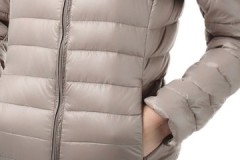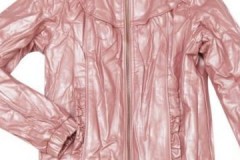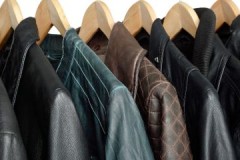Good advice on how to iron a windbreaker made of different materials
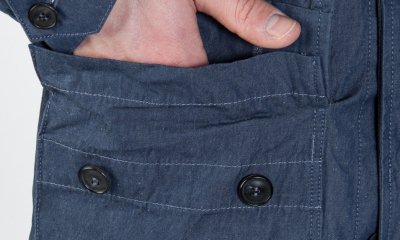 A windbreaker is a lightweight outer garment that is often kept folded. So it takes up less space, but it can wrinkle.
A windbreaker is a lightweight outer garment that is often kept folded. So it takes up less space, but it can wrinkle.
You can hang your crumpled windbreaker on a hanger and wait for its fabric to flatten itself. However, this does not always help. Heavily wrinkled clothes have to be ironed with an iron or a steamer.
Is it possible and how to iron the windbreaker? Consider how to iron windbreakers from different types of fabric.
Content
Features for various fabrics
Each material from which windbreakers are made has certain nuances and limitations when ironing. Let's consider each of the cases in more detail.
Raincoat fabric
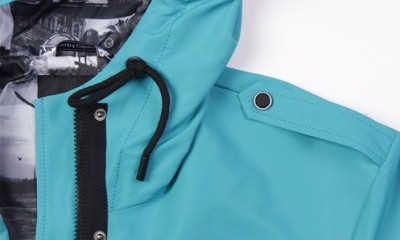 The raincoat fabric is ideal for sewing windbreakers. It is very practical and comfortable to wear.... However, it wrinkles easily and may require ironing.
The raincoat fabric is ideal for sewing windbreakers. It is very practical and comfortable to wear.... However, it wrinkles easily and may require ironing.
Before starting the ironing process, you should read the information on the label, which is usually sewn into the back of the collar or into the side seam. There it is indicated in what way you can iron this thing.
Manufacturers often warn that ironing is not allowed, but you can use steaming.
Even if the manufacturer allows ordinary ironing, it is better to use steaming with an iron with an appropriate function or a steam generator for raincoat fabric.
This happens according to the following scheme:
- Water is poured into a steam generator or iron.
- Heat the device to the minimum temperature.
- Hang a windbreaker on a hanger.
- Steamed, holding the steam generator at a distance of 10-15 cm from the fabric.
- Leave the item on a hanger until it cools completely.
Polyester
Polyester fabrics hardly wrinkle... But if the windbreaker has been folded for a long time, deep, ugly creases can form on it.
In the case of polyester, it is also important to take into account the information from the manufacturer on the tag. Usually ironing is allowed, but only with minimal heating to a temperature of 110 degrees.
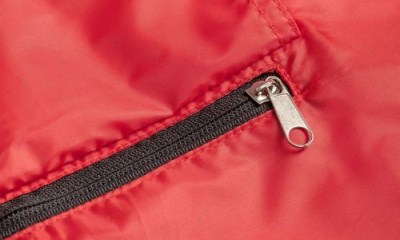 It is carried out according to the following plan:
It is carried out according to the following plan:
- the windbreaker is turned inside out;
- the place for ironing is covered with damp gauze;
- iron should be done with quick strokes, without holding the iron in one place.
If wrinkles remain after this delicate treatment, you can try to smooth the fabric with water.
To do this, the jacket is moistened with warm water from a spray bottle and left on a hanger until it dries completely.
Most manufacturers sew a small piece of fabric to the seamy side of their garments.which the product itself consists of.
Many people believe that this patch is intended to be used to make a patch if necessary.
Nylon
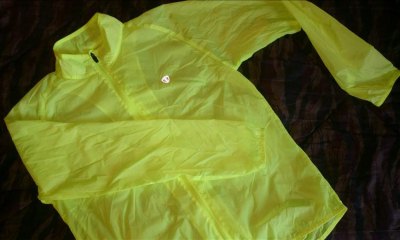 It is a versatile elastic material. It does not tolerate high temperatures and can deform when wet... The information on the label is also important here.
It is a versatile elastic material. It does not tolerate high temperatures and can deform when wet... The information on the label is also important here.
Usually, such things are allowed to be ironed at a minimum temperature or steamed, also at the lowest heat.
You need to iron through wet gauze with quick movements... When steaming, keep the iron or steam generator at a distance of 15 cm and also do not linger in one place.
After finishing the ironing process, leave the windbreaker hanging on the hanger for 2-3 hours. After that, you can put it on or hang it in the closet.
Can the membrane be ironed?
This material has become very popular recently. From it they sew comfortable, beautiful and comfortable things to wear. You cannot iron them with an iron, but you can steam them gently.
Before steaming, the item should be hung on a hanger in a place where it will not be exposed to direct sunlight or strong draft. Then heat the steamer or the vertical steaming iron to a temperature of 100 degrees.
Bologna
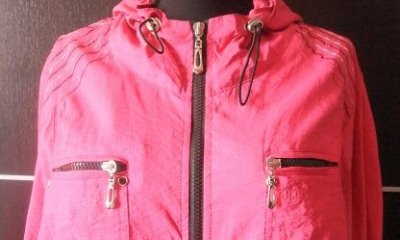 Possibility to iron things from Bologna depends on the ratio of fibers and the density of the material.
Possibility to iron things from Bologna depends on the ratio of fibers and the density of the material.
Therefore, all stages of caring for a bolognese windbreaker must be performed in accordance with the recommendations indicated on the tag.
Thick fabrics can be ironed out without damp gauze... However, first try ironing a small section of your windbreaker in an inconspicuous place.
It is possible to iron a thing only if the fabric in the experimental area has not shrunk or become rough. Thin bologna can only be steamed gently.
Cotton
Lightweight outerwear can be made of cotton. Such things wrinkle even while wearing. Iron them in this way:
- The windbreaker is laid out on the ironing board.
- Moisten abundantly with a spray bottle.
- The iron is heated to a temperature of 200 degrees.
- Iron the thing, gradually moving from one area to another.
- Large and deep creases are additionally moistened and ironed with increased care.
Recommendations
Many items made from fine synthetic fabrics are very difficult to clean.... There are often cases when the manufacturer generally prohibits processing at home.
If the thing is too capricious to care for, it may be better to buy another one, less whimsical, instead.
Conclusion
If you store your windbreaker folded, it will most likely get creases. You can smooth them out, but only if you follow all the recommendations on the tag.
Iron gently, starting on inconspicuous areas... If ironing is not possible, you should simply wet the windbreaker and wait until it "sags" under its own weight.


